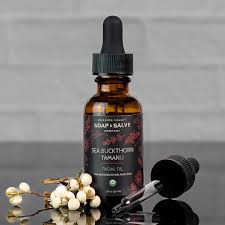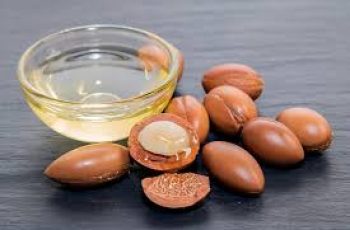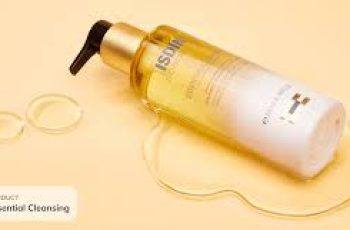How to use Vitamin C Serum and Hyaluronic Acid and Retinol
There’s no denying that vitamin C, hyaluronic acid and retinol are three of the most potent and effective ingredients available. Whether they are combined or use them separately you’ll be amazed with the positive skin results you’ll see after a few short weeks.
Now if you have found yourself reading this and realising you haven’t introduced these ingredients into your daily routine, well, you’ve come to the right place as today I intend to explain how to use vitamin C serum, hyaluronic acid, and retinol together. So, let’s get stuck in and find out more about these powerful ingredients and how they’ll improve your complexion.
Is it OK to use retinol and hyaluronic acid together?
Absolutely, in fact it is more than OK to use hyaluronic acid and retinol together. The pH levels of skincare products play an important role in determining which formulas can work together effectively. When there is an imbalance in the pH levels on the skin surface will result in flushing, redness, and other forms of skin irritation.
Luckily for us, retinol, and hyaluronic acid work perfectly together. Whilst retinol tackles build-up of dead skin cells, blemishes and helping to boost the collagen production of the skin, hyaluronic acid can draw in moisture and lock it into the outer layers keeping the complexion plumped, hydrated and full of bounce. To get a better understanding of how to layer hyaluronic acid and retinol together check out our blog about it over on The Beauty Insiders.
Is it OK to use retinol and vitamin C together?
The short answer is yes you can use vitamin C and retinol, but its best to avoid using them all together as this can be too much exfoliation for the skin. To get optimal results try applying retinol in your evening routine and vitamin C during the morning.
By using vitamin C serum in the morning, you are preparing your skin to be fully protected to any exposure to free radical damage, such as pollution, UV rays and other environmental aggressors. This is because vitamin C is packed with antioxidants which can combat these skin damaging particles and can maintain an overall healthy, glowing complexion.
Following this with an evening routine consisting of retinol will ensure your skin is rejuvenated whilst you sleep. It’s able to do this by increasing the speed of your skin cell turnover revealing a fresh layer of skin that is younger looking and luminous. By using each of these potent powerhouses during separate routines will allow enough time between applications to minimise the risk of any irritation or allergic reactions. I would also suggest using each ingredient as mentioned as the potency of retinol is destroyed when exposed to UV light. Applying a daily SPF of 30 and above will result in your skin being fully protected from any further damage.
Can I use vitamin C and hyaluronic acid at the same time?
You can indeed! You’ll find that many formulas, particularly serums containing vitamin C quite often include some type of hyaluronic acid in the blend. They can complement each other and work at hydrating, protecting, and repairing the skin that is showing the first signs of ageing, such as fine lines and wrinkles. You will also find that too much vitamin C can trigger some severe dryness, irritation and even a flare-up in acne breakouts, by teaming this with hyaluronic acid will help calm and soothe the skin ensuring each ingredient works effectively at creating a balanced and healthy moisture barrier.
Do you use hyaluronic acid or vitamin C first?
With both vitamin C and hyaluronic acid often blended into water-based formulations it can get a little confusing to establish which should be used first. It really boils down to the thickness of the consistency of each product as this will determine which should be applied first. Having said that, I personally find that the most effective vitamin C serums come in a light-weight serum that should be applied before a heavier hyaluronic acid moisturiser or gel. If you’re wanting to know more about when to use hyaluronic acid and vitamin C check out this blog post as it’ll no doubt clear up any questions you have.
Should I use hyaluronic acid before or after retinol?
By applying hyaluronic acid before retinol, you are ensuring that the skin surface contains the correct levels of water. This not only ensures the natural protective barrier is able to function correctly, but your skin will act similarly to damp sponge soaking up every drop of retinol allowing it to absorb fully into the lower layers of the dermis.
Don’t forget before using any new skin ingredients or formulations you should first consult with a doctor or dermatologist to ensure your skin will tolerate them. Next you need to perform a patch test for 24 hours before applying the product to your face, this will avoid any unwanted reactions and irritation.
When should vitamin C serum be used in routine?
When you use vitamin C serum in your routine is down to personal preference. However, if you ask me, there is really no point in applying vitamin C during your evening routine. As you know this acid is packed with antioxidants that help to protect the skin from free radicals. The exposure you have to free radicals are limited during the night whilst you sleep (unless you’re sleeping under the stars of course). Therefore, I suggest you can use your potent retinol or other evening formulations to repair, restore and replenish the skin whilst you sleep.
So, there you have a little more information about how to use vitamin C serum and hyaluronic acid and retinol. With this potent cocktail I wouldn’t be surprised to hear you say your skin will look the best it ever has. Just remember to use them correctly and you’ll gain optimal results with these three skin heroes. If you had any questions, come and follow me over on Instagram and why not check out the latest episode of The Green Sofa, over on YouTube.
DQH Knowledge drop: In your 20s, your skin cell turnover decreases. (Cell turnover is a key component in keeping your skin youthful.) You know what else slows down? Your collagen production. Starting in your 20s, collagen decreases by about 1 percent per year. Should you want to prevent fine lines and wrinkles, start by eliminating behaviors that contribute to premature aging. “If it’s bad for you, it’s bad for your skin,” says dermatologist Michel Somenek.
“Cigarette smoking reduces blood flow to the skin and causes premature wrinkling and a dull skin texture. Making the repeated pursed motion to inhale can also cause smoker’s lines. Alcohol and recreational drugs are toxins for the skin that damage its cellular structure and DNA,” Somenek tells us. “The faster you eliminate vices while you are young, the better chance your skin and body have to recuperate.” Also, adopting an anti-aging routine in your 20s is key. After all, the best offense is a good defense. We spoke to Somenek and experts Joshua Ross and Audrey Kunin to find out more.
Keep reading for the best anti-aging products for your 20s, according to skincare professionals.
Sunscreen
“We all know that the sun is the number one cause of skin aging and starting the prevention in your 20s is very important,” Ross says. “The majority of your sun damage won’t start to appear until you’re in your 30s, so don’t wait until you see it surface or you’ll be behind the curve. Stay ahead of it with a good-quality zinc-based sunscreen worn daily.”
Farmacy Green Defense Daily Mineral Sunscreen
An invisible sunscreen with SPF 30, plus botanical extracts meant to protect skin with tons of antioxidants. Bonus: It’s clean and fine to use under makeup.
Bareminerals Complexion Rescue™ Tinted Moisturizer Broad Spectrum SPF 30
Although we recommend you use your SPF and moisturizer separately, we also understand moments when you don’t have time or energy for that extra step. For those times, this bareMinerals moisturizer is a great thing to have on hand.
Vitamin C Serum
“A great introduction to anti-aging is to start with a vitamin C serum in your morning skincare routine,” Ross says. “It’s a powerful antioxidant that will neutralize free radicals and brighten the skin.” He adds that it’s a great way to counteract the effects of the sun’s harmful rays, which, as previously mentioned, are among the biggest causes of premature aging.
Drunk Elephant C-Firma™ Vitamin C Day Serum
The Drunk Elephant C-Firma is a lightweight serum that promises to give skin a glow by combining the brightening powers of vitamin C with ferulic acid, l-ascorbic acid, and vitamin E. The included sodium hyaluronate is meant to replace hydration loss, so you shouldn’t have to deal with any irritation.
Sunday Riley C.E.O. Rapid Flash Brightening Serum
This potent serum is jam-packed with vitamin C (15 percent, to be exact), which means it’s a potential superstar at both brightening skin and dousing it in antioxidants.
Peptides
Using peptides on your skin has many benefits, says Somenek. “The skin barrier is what defends the body against pollution, UV rays, bacteria, and toxins. It can be damaged by several everyday factors. Using topical peptides aids in building a stronger barrier,” he says. “Peptides comprise elastic fibers, which are a type of protein. These fibers help to make skin appear taut and firm. Peptides can also help repair damaged skin, relieve inflammation, and even out skin tone. Some peptides can kill acne-causing bacteria that is common in 20-somethings.”
Kunin agrees, saying, “Peptides are an excellent entry point for supporting collagen.” She recommends looking for face and eye treatments that contain these collagen-boosting powerhouses.
Charlotte Tilbury Magic Eye Rescue Cream
This Charlotte Tilbury super-emollient eye cream has a base of coconut oil and shea butter (read: it’s incredibly hydrating). Botanicals plus peptides are meant to help reduce dark circles and boost collagen, respectively.
This creamy moisturizer serves up potent collagen-boosting peptides and pycnogenol, and antioxidant-rich vitamin C. “Instead of sitting on top of the skin, peptides penetrate the outer layer so they go deep. The ‘signals’ they send tell the cells to produce elastin and collagen, which are needed for youthful-looking skin,” explains Somenek.
At-Home Peel Pads
Remember that skin cell turnover fiasco we talked about earlier? One way to help support it is by exfoliating. “Exfoliation is important to help keep skin fresh and luminous,” Kunin says. She recommends using at-home peel pads as an easy and effective way to exfoliate.
“The goal in your 20s is to fight the slowing pace of cell turnover. It is wise to use products that gently exfoliate, yet still remove oil and other impurities. Products that have Alpha Hydroxy Acids (AHA) or Beta Hydroxy Acids (BHA) are a good choice.”
According to Somenek, you should only exfoliate two to three times a week. “People of all ages are guilty of over-exfoliating and that can be too much of a good thing,” he says.
Dermadoctor Kakadu C Intensive Vitamin C Peel Pad
A few swipes of this Derma Doctor powerful peel pad promise to leave your skin glowing and smooth, thanks to the seven (yes, seven) types of chemical exfoliants, including AHA and BHA. It also contains vitamin C via Kakadu plum extract for added brightening and antioxidant protection.
KEY INGREDIENTS Kakadu plum extract is sourced from the Kakadu plum, a fruit grown in northern Australia. It contains vitamin C, which restores the skin’s natural barrier, increases collagen production, and soothes irritation.
Dr. Dennis Gross Skincare Alpha Beta® Universal Daily Peel Pads
These are the gold standard of peel pads, with a cult following and over 900 five-star reviews on Sephora. They’re easy to use and contain a blend of anti-aging exfoliating acids.
Emollient Night Cream
“In your 20s, you need to start upping the hydration in your skincare routine. You may have been cautious of over-moisturizing because of acne in your teens, but as you enter your 20s, your skin transitions and becomes drier,” Ross says. “I recommend an emollient night cream added into your evening skincare regimen.”
“Twenty-somethings need to make sure that they are not using creams that will clog their pores and cause excess oil production,” says Somenek. Opt for non-comedogenic products.
Cerave Skin Renewing Night Cream
One great choice is the CeraVe Skin Renewing Night Cream, which is a non-comedogenic night cream that leaves skin soft and glowy. It combines the moisturizing powers of ceramides and hyaluronic acid.
RoC Retinol Correxion Max Hydration Creme
“The best night cream ingredients contain retinol, benzoyl peroxide, and/or salicylic acid or hyaluronic acid. The goal is to moisturize, yet remove excess oil,” says Somenek. This Roc Retinol Correxion cream fits the bill as it contains both hyaluronic acid and retinol so it promises to moisturize while also being non-comedogenic.



